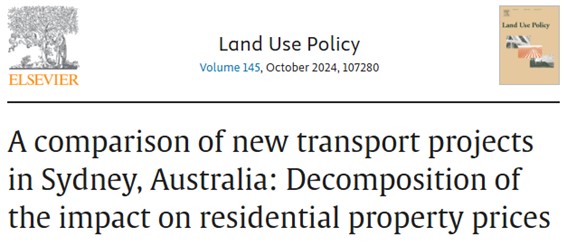Camila Balbontín, Corinne Mulley
Abstract
Public transport projects are expensive, long-lived and their funding is often a challenge. As a result, relevant authorities around the world are concerned in understanding the economic impacts induced by these new public transport projects and, in particular, whether any increases in land value which may follow an investment (referred to as land value uplift) can be ‘captured’ as a potential source of funding. Land value uplift can occur at different stages of a project and might not be only due to the improved accessibility of the project. This study focusses on understanding the complexity of land value uplift on residential properties resulting from three public transport projects in Sydney, Australia (two light rail projects and one heavy rail), as a way of providing insights to create evidence-based value capture policies. Multilevel models are presented comparing the affected or ‘catchment’ areas of the projects with what is referred to as a ‘control area’ where the investment has not had an impact. The total residential land value uplift is analysed prior and post implementation – and decomposed into what can be attributed to improved accessibility, property characteristics, neighbourhood characteristics, time series, and unobserved uplift. The results show that the anticipated value uplift before the projects’ implementation is significantly higher for the heavy rail project (between 12 and 15 per cent after its construction process started for properties located within 800 m from the station) than for the light rail project (5.7 per cent only for properties located within 400 m from the station), but it is close to zero for the project that represents the anticipated uplift for a light rail extension project after its announcement. However, there is a significant value uplift for the light rail extension project after its implementation (around 6 per cent) which is mainly due to the accessibility improvements. The distance to stations also showed to be significant in the light rail and heavy rail projects, with properties closer to the stations having a higher anticipated value uplift.
